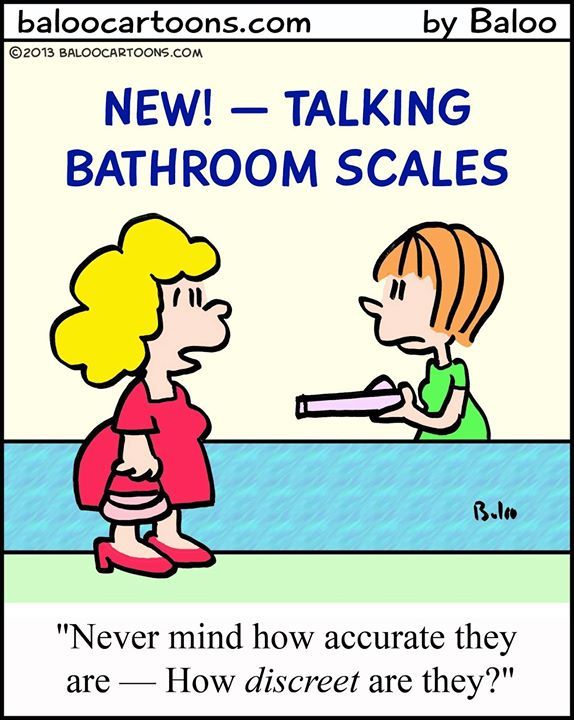Read Our Latest Stories

They say that haste makes waste; but there are seven areas of waste that if left ignored, will not only bring down a unit, but also your entire organization! How many of these desperados are currently hiding out in your organization?
· Correction – Re-doing what was not done correctly the first time
· Overdoing it – Doing more than is required or needed
· Motion – Unnecessary reaching and walking
· Material movement – Unnecessary movement of materials, supplies, and/or information
· Processing – More steps in a process than are needed
· Inventory – Excess supplies
· Waiting – Idle, non-productive time due to waiting on other people, machines, or processes
Getting these varmints under control can be very difficult, as surprisingly staff will sometimes shelter them while outwardly complaining about them! So how do you root them out of your organization?
QCC Healthcare knows how. We have been doing it for healthcare organizations for years, and we can help get them out of your system.

Merriam-Webster defines compliance as: “Noun – A: a readiness or willingness to yield to the wishes of others. B : conformity in fulfilling official requirements.
In healthcare, we must yield to the wishes (regulations and standards) set by organizations such as The Joint Commission, the Centers for Medicare and Medicaid Service (CMS), OSHA, and other regulatory and accrediting agencies in order to fulfill our mission to improve the health and well-being of the people and communities that we serve.
Many regulations, such as EMTALA, HIPAA, and others are a direct result of healthcare dropping the ball. Today, it is hard to imagine a time when we turned away patients in distress in the Emergency Department because of their inability to pay or shared patient’s protected health information (PHI) with anyone without the consent of the patient.
Healthcare has now shifted from a provider-centered model to a more patient-centered model. Reimbursement is now tied to outcomes (value-based care) rather than fee-for-service. These are positive trends, but they have substantially increased the number of regulations and standards to which we must be comply if we are to stay in business.
The opposite of compliance is defiance. This defiance can come in many forms, such as sarcasm or passive aggressive behavior, e.g. complaining, criticizing, disrespectful; to open hostility, “I refuse to do this!”
If you are having difficulty getting staff, physicians, and/or others to comply with federal, state, local, or accreditation agency regulations and standards, please contact QCC Healthcare. We can help you.

As contradictory as it may seem, too often when we strive to put new programs and processes in place to improve the quality of patient care we often spend far more time rewarding bad behavior than the desired behavior.
What? That makes no sense! But when you think about it, I am willing to bet that you spend far more time with your “trouble makers” and low performers who are resistant to the change (and may actually try to sabotage your efforts) than you do with your high performers; the very ones who can help you drive your unit and your organization to a higher level.
“I don’t reward bad behavior!” you say. But if you are spending 80% of your time trying to get the low performers on board (and some leaders can be low performers too), you are in effect recognizing and rewarding the bad behavior while ignoring the high performers. We often think our high performers are already motivated and committed to providing safe and high quality patient care, so there is no need to focus our time on them.
On the contrary, high performers need to be recognized for their contributions on a regular basis. They need to know that the organization recognizes and appreciates their work, and that they are valued employees. A word of praise in front of their co-workers or a hand-written card for a job well done will do wonders. If they do not receive the recognition that they need and deserve, they will move on.
You still have to deal with the low performers. They must be held accountable and either step up to the plate or get out of the game. When you get rid of your low performers, less is more. The other employees will be thrilled that they are gone, and now you have the opportunity to hire a better and more positive employee.
If you need some help in developing some strategies to reward your high performers and deal more effectively with your low performers, call QCC Healthcare. We can help you.

Anyone who has tried to lose weight knows what a difficult challenge it can be.
Healthcare organizations across the country are facing a challenge that is equally daunting:
- To enable access to health care services for all citizens, and
- To ensure these services are cost-effective and meet certain established standards of quality.
If every healthcare practitioner and provider performed their jobs as they were trained and meant to do, there would be no need for quality improvement measures, as everyone would be doing the right thing, to the right patient, at the right time. Unfortunately, the data confirms that this is not always the case. Enter the healthcare quality professional.
As healthcare quality professionals, our role is to help our organizations meet this challenge. But how does one go about accomplishing this? Through employing the processes of organizing, planning, controlling the use of resources, leading, and influencing, such as:
- Planning meetings
- Clarifying goals and tasks
- Monitoring and appraising productivity
- Training new members
- Encouraging high performance and teamwork
- Communicating goals and expectations
- Informing superiors of needs and accomplishments
- Coordinating with and supporting other teams
If you need help with your processes, QCC Healthcare Consultants can help. We have many years of experience and understand what is needed to help you and your healthcare organization meet their challenges.

We often talk about the value of the healthcare services that we provide to our patients and community, but what exactly is value?
Value is everything essential to a process that helps it to become more stable and predictable. There is waste and there is value in every process. Predictability is a value as it helps us to be prepared for the expected (average length of stay, door to doctor time, etc.) and the unexpected (disasters, both internal and external). Chaos and disorder, on the other hand, are not values to any process.
Who defines value in your healthcare organization? Is it the Board of Directors? The CEO? The Chief of Quality & Compliance? The CNO? In actual fact, it is the patients and their families that define value.
You might ask, “How can they be the ones to define the value of the healthcare services provided to them when they have little or no medical or nursing knowledge?” While this may in part be true, they are the ones paying for your services and if they are not satisfied they will go someplace else. Often it is not the state-of-the-art medical care that is provided that defines value for patients, but more the manner in which it is delivered. Have you ever been to a shop with great merchandise or a restaurant with excellent food where the service was so bad you swore you would never return? If enough of your patients do not find value in the care and services provided to them, you might as well start packing up and turning off the lights.
So how do you go about finding out how your patients define value? Go and ask them. Not just in surveys, but in face-to-face conversations while they are in your facility. And ask their family members and partners as well. If you listen carefully, they will provide you with the answers and the word will soon spread that your organization really cares, and that adds value to any patient’s visit.

One of the most important approaches towards reducing costs is not to stop doing things, but to do them much more efficiently. Part of doing things efficiently is to standardize the way in which they are done. Standardization is a critical part of creating a safe environment. When a process is reinvented each time a patient comes into a Doctor’s Office or Operating Room, the result is mistakes, harm, and even death.
A major change in healthcare is that we are now starting to see many adverse events as being avoidable, and not an inevitable part or byproduct of the care being rendered. Quality and safety have taken center stage with regards to people’s concerns as to where the healthcare system is going. These must be core values of your institution.
If good processes are in place, safeguards are instituted and rules are followed so that errors do not occur, then you should never have a situation where a “never-event” such as wrong site surgery occurs. Unfortunately, wrong-site surgery does occur. So what is missing?
Healthcare workers do not wake up in the morning and say, “Boy, I just can’t wait to get to work so I can harm a patient!” But as humans, even with the best policies and safeguards in place, mistakes will happen. Sadly, ours is a punitive society. If you tell someone you have made a mistake, it is often used against you. This prevents people from making a personal disclosure of failure; which has a negative impact on safety and quality.
The Agency for Healthcare Research and Quality (AHRQ) advocates adopting a culture of safetythat encompasses these key features:
· Acknowledgment of the high-risk nature of an organization's activities and the determination to achieve consistently safe operations
· A blame-free environment where individuals are able to report errors or near misses without fear of reprimand or punishment
· Encouragement of collaboration across ranks and disciplines to seek solutions to patient safety problems
· Organizational commitment of resources to address safety concerns
( https://psnet.ahrq.gov/primers/primer/5/safety-culture )
These strategies are an essential component of preventing or reducing errors and getting your healthcare organization headed down the road of improving overall health care quality and safety. If your organization needs some help with their roadmap, QCC Healthcare Consultants will be happy to serve as your guides.

The public expects healthcare organizations to be prepared to care for them during a disaster, and the Joint Commission’s Emergency Management (EM) standards specify the Elements of Performance that are required to ensure the public’s expectations are met.
Where most disaster response plans fail is not due to a lack of supplies, equipment, or even manpower. It is due to a breakdown in communications. One of the greatest areas for confusion and inefficiency during actual operations under emergency conditions is the inability to control the information flow. Who is responsible for relaying information to the Incident Command Center, where does it go, and how is action taken on the information? Managing the flow of information is absolutely necessary for accurate status and analysis of an emergency/disaster situation.
If your organization needs some help in developing or updating their emergency response plan, QCC Healthcare Consultants have years of experience in developing and implementing viable emergency management programs (including prevention, preparedness, response and recovery), and developing emergency response plans to ensure compliance with the Joint Commission Emergency Management standards.
Don’t get caught with your scrubs down!

" It must be considered that there is nothing more difficult to carry out, nor more doubtful of success, nor more dangerous to handle, than to initiate a new order of things ."
Tell this to any Nurse Manager or Hospital Administrator and they will quickly nod their heads in agreement. What is fascinating is that these words are over 500 years old! They are from Niccolò Machiavelli’s book, The Prince , printed way back in 1513; and they are as true today as they were back then.
Everyone resists change, even if it is in their best interests. Why is that? There are several reasons:
· Misunderstanding of the need or reason for the change and its implications
· Fear of a lack of skills required for the change
· No longer recognize the “correct” way to do things
· Perceived (or real) loss of control
· Change in the status quo
· WIIFM (What’s in it for me?)
Overcoming staff resistance to change is difficult, but not insurmountable. QCC Healthcare Consultants can help you become an effective change agent to meet your organizational goals and improve staff and patient satisfaction. This is what we do. Let us help you.

The addiction rate among the general public is somewhere between 10% – 15%. Nurses are part of the general public, but according to the Texas Peer Assistance Program for Nurses (TPAPN) the rate of substance use disorder (SUD) and addiction in nurses is much higher, with some estimates being as high as 40%! In 2017 there were 234,027 Registered Nurses (RNs) actively practicing in Texas. That means at least 23,400 practicing RNs have SUD, which is a scary thought.
As professionals devoted to caring for others, why are nurses so bad about caring for themselves?
Some of the things that contribute to the high rate of substance use disorder and addiction in nurses include:
· Stress
· Long shifts
· Physical pain
· Ease of access
· Availability
Sadly, even when a nurse is found to be working while impaired or caught diverting drugs they are usually terminated but not reported to the Board of Nursing. “I did not want the nurse to get into trouble,” is cited as the most common reason for not reporting them. However, failing to report the nurse or refer them TPAPN almost guarantees that at some point they will get into trouble, either by harming themselves or, worse yet, a patient.
The truth of the matter is that it is an ethical and legal requirement to report a nurse to TPAPN or Nursing Peer Review that is impaired or suspected of being impaired by chemical dependency or mental illness AND there is no Nursing Practice Act violation.
When a Nursing Practice Violation is involved, a complaint must be made to the Texas Board of Nursing. Note: A complaint to the BON does not necessarily mean disciplinary measures, such as forfeiture of their nursing license.
The duty of the Board of Nursing is to protect the public. The duty of TPAPN is to help the nurse AND protect the public.
If you are thinking that you are lucky in that none of the nurses in your organization have SUD, think again.
For help in recognizing the signs and symptoms of substance use disorder, establishing a Nurse Peer Review Committee, or implementing proven methods to help mitigate drug diversion contact QCC Healthcare Consultants. This is what we do.

How do you define health? Being within one’s body mass index (BMI) range? Free of diseases? Able to leap tall buildings in a single bound?
The World Health Organization’s definition of health is: “Health is a state of complete physical, mental, and social well-being and not merely the absence of disease or infirmity.” That’s a pretty tall order.
If you were to rank the U.S. healthcare system against all the other healthcare systems in the world, where would you rank it? Number 1? Number 5? According to the World Health Organization, in 2017 the US did not even make it to the top 25. We came in at a dismal 37th place despite spending more per capita on healthcare than any other industrialized nation. In 2014, 17.1% of our gross domestic product (GDP) went towards healthcare and it is projected to reach 20% within the next few years.
We all understand the need for quality and performance improvement in healthcare to help reduce costs while simultaneously improving patient safety, access, and outcomes; but where to start?
The answer is surprisingly simple: You start by knowing and understanding your customers. The customer is the person that receives the processes, products, or services that your healthcare organization provides; and they are the ones that define the quality of those products and services, not the healthcare providers.

They say that haste makes waste; but there are seven areas of waste that if left ignored, will not only bring down a unit, but also your entire organization! How many of these desperados are currently hiding out in your organization?
· Correction – Re-doing what was not done correctly the first time
· Overdoing it – Doing more than is required or needed
· Motion – Unnecessary reaching and walking
· Material movement – Unnecessary movement of materials, supplies, and/or information
· Processing – More steps in a process than are needed
· Inventory – Excess supplies
· Waiting – Idle, non-productive time due to waiting on other people, machines, or processes
Getting these varmints under control can be very difficult, as surprisingly staff will sometimes shelter them while outwardly complaining about them! So how do you root them out of your organization?
QCC Healthcare knows how. We have been doing it for healthcare organizations for years, and we can help get them out of your system.

Merriam-Webster defines compliance as: “Noun – A: a readiness or willingness to yield to the wishes of others. B : conformity in fulfilling official requirements.
In healthcare, we must yield to the wishes (regulations and standards) set by organizations such as The Joint Commission, the Centers for Medicare and Medicaid Service (CMS), OSHA, and other regulatory and accrediting agencies in order to fulfill our mission to improve the health and well-being of the people and communities that we serve.
Many regulations, such as EMTALA, HIPAA, and others are a direct result of healthcare dropping the ball. Today, it is hard to imagine a time when we turned away patients in distress in the Emergency Department because of their inability to pay or shared patient’s protected health information (PHI) with anyone without the consent of the patient.
Healthcare has now shifted from a provider-centered model to a more patient-centered model. Reimbursement is now tied to outcomes (value-based care) rather than fee-for-service. These are positive trends, but they have substantially increased the number of regulations and standards to which we must be comply if we are to stay in business.
The opposite of compliance is defiance. This defiance can come in many forms, such as sarcasm or passive aggressive behavior, e.g. complaining, criticizing, disrespectful; to open hostility, “I refuse to do this!”
If you are having difficulty getting staff, physicians, and/or others to comply with federal, state, local, or accreditation agency regulations and standards, please contact QCC Healthcare. We can help you.

As contradictory as it may seem, too often when we strive to put new programs and processes in place to improve the quality of patient care we often spend far more time rewarding bad behavior than the desired behavior.
What? That makes no sense! But when you think about it, I am willing to bet that you spend far more time with your “trouble makers” and low performers who are resistant to the change (and may actually try to sabotage your efforts) than you do with your high performers; the very ones who can help you drive your unit and your organization to a higher level.
“I don’t reward bad behavior!” you say. But if you are spending 80% of your time trying to get the low performers on board (and some leaders can be low performers too), you are in effect recognizing and rewarding the bad behavior while ignoring the high performers. We often think our high performers are already motivated and committed to providing safe and high quality patient care, so there is no need to focus our time on them.
On the contrary, high performers need to be recognized for their contributions on a regular basis. They need to know that the organization recognizes and appreciates their work, and that they are valued employees. A word of praise in front of their co-workers or a hand-written card for a job well done will do wonders. If they do not receive the recognition that they need and deserve, they will move on.
You still have to deal with the low performers. They must be held accountable and either step up to the plate or get out of the game. When you get rid of your low performers, less is more. The other employees will be thrilled that they are gone, and now you have the opportunity to hire a better and more positive employee.
If you need some help in developing some strategies to reward your high performers and deal more effectively with your low performers, call QCC Healthcare. We can help you.
